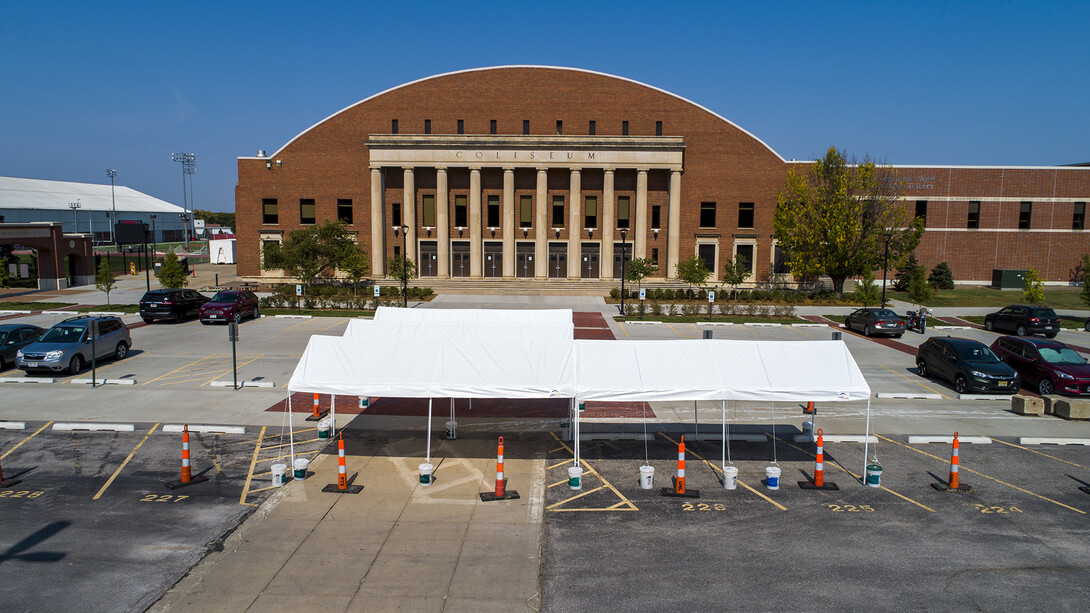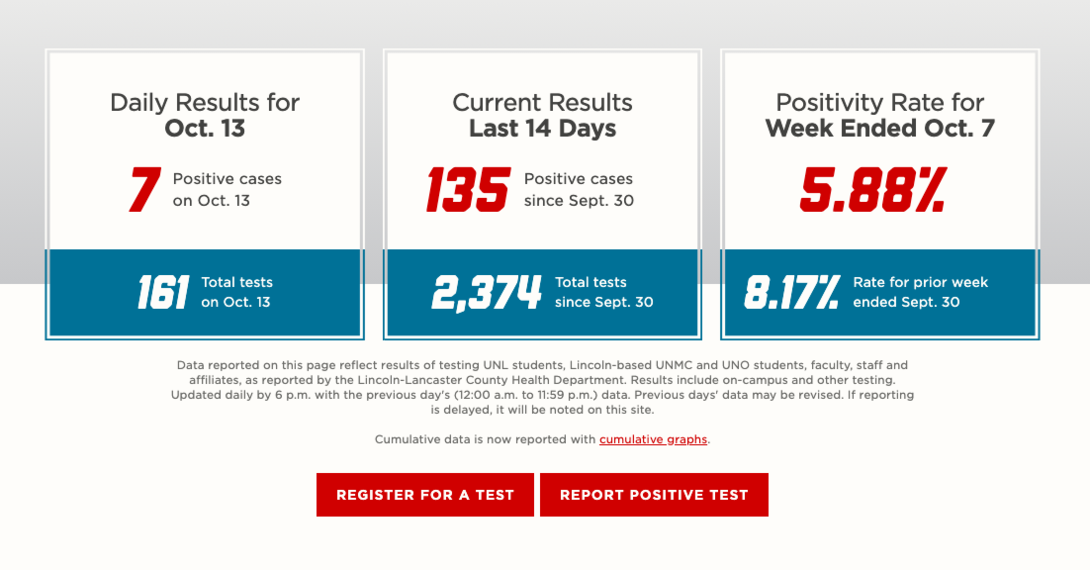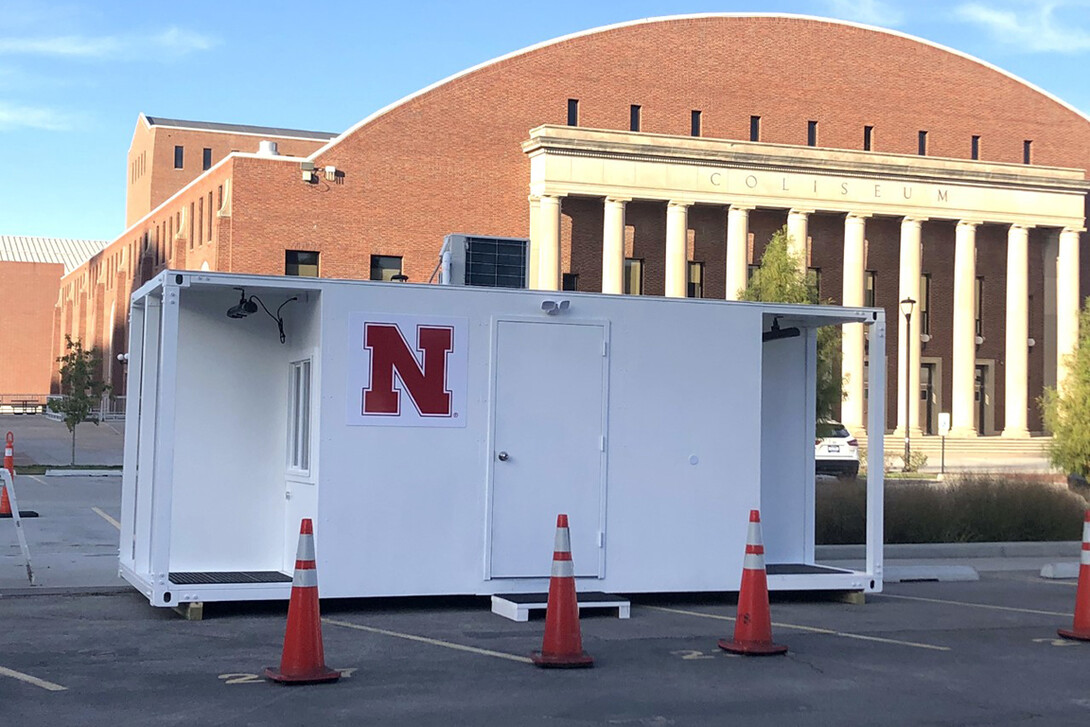
The steady expansion of COVID-19 testing at the University of Nebraska–Lincoln is helping capture a broader picture of virus trends on campus and better inform related decisions.
Focused primarily on providing access to individuals who are symptomatic or suspect exposure, the university’s testing program started in the University Health Center before expanding through a TestNebraska partnership that offers free access to all students, faculty and staff. It has continued to grow in scope and focus with the inclusion of Big Ten protocols for student-athletes and, most recently, the addition of randomized mitigation testing of the entire campus community.
“From the start, the university has organized our testing protocols in a safe way, dedicated to protecting students, faculty, staff and the greater Lincoln community,” said Bob Wilhelm, vice chancellor for research and economic development. “And, the testing we’ve done has been predominantly high fidelity, providing information that we can act on through our public health advocacy team and the Lincoln-Lancaster County Health Department.”
Overall, since Aug. 12, the university has tracked more than 8,000 individual tests on students, faculty and staff — all of which are outlined on the COVID-19 dashboard. Results from those tests have helped guide campus decisions and allowed the university to reduce localized spread through quarantines and isolation.

Wilhelm said the overall picture of virus activity on campus is continuing to come into focus through the randomized mitigation testing.
“As it is just getting started, we don’t have a lot of data yet from the randomized testing,” Wilhelm said. “I’m cautious about making any pronouncements, but, anecdotally, we’re not seeing a lot of occurrence among our campus community.
“While results of the campus randomized testing look good, recent trends in the community are concerning. We’ll know more about the state of the virus on campus when we make a more data-driven assessment in two or three weeks.”
Launched Sept. 28, the randomized mitigation testing program is designed to provide university leaders and health care professionals with a clearer look into how the virus is spreading on campus. It also helps quickly identify individuals who test positive for COVID-19, particularly asymptomatic carriers of the disease.
The randomized testing is offered separately from the university’s free, on-campus TestNebraska program, which is at the 17th and R streets parking garage. The randomized testing is taking place via appointment, 3 to 6 p.m. weekdays in tents in the East Stadium Loop, immediately south of the Coliseum.

Selection for the testing is truly random, with a sample of Huskers pulled weekly from a current list of students, faculty and staff. The weekly sample size is adjusted as needed to meet testing goals. Those selected are notified via email and urged to set up an appointment to get tested during the following week.
Details on the randomized mitigation testing site and process are available here.
Ultimately, the university seeks to test at least 500 faculty, staff and students per week through the randomized option.
“It’s very important that those who are randomly selected participate as it will benefit the entire campus community,” Wilhelm said. “In terms of random sampling, 500 participants would provide a statistically meaningful estimate of occurrences for the campus community. The estimate will improve as more participants are tested.
“Being able to provide that estimate on a weekly basis would be extremely useful as we continue to prepare for the spring semester.”
Looking ahead, Wilhelm said the university continues to consider additional COVID-19 testing options as they are developed nationally and show proven reliability. He said some campus research — including Shannon Bartelt-Hunt’s study of COVID-19 in wastewater from campus living facilities — may help direct testing and improve understanding of virus spread.
“We are going to pursue every opportunity to increase safety for students, faculty and staff so we can continue to be successful in our teaching, research and community engagement missions,” Wilhelm said. “Of course, while testing is a useful tool in defining boundaries of the virus, our behaviors remain the best opportunity for controlling it.
“Wearing masks, washing hands, using hand sanitizers and observing social spacing continue to be the most important activities that we need to follow as a community.”
Learn more about the university’s ongoing response to COVID-19.








